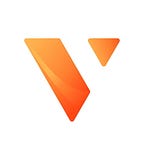V SYSTEMS Smart Contract and Token System
By the Co-founder of V SYSTEMS, Rob Zhang
31 March 2019
Since the creation of the blockchain, there have been numerous updates and changes made to the technology. However, with “open source” being commonplace in the blockchain industry, thresholds and costs for clone replication remain very low. Most of the many iterations of blockchain are nothing but a small change in the terminology.
On another hand, the discrepancy between an innovative programmer and an outstanding business leader often leads to a gap between the technology and actual adoption. The expectation of short-term profit also plays a part in hindering the development of a blockchain project, as the balance between investors, community, and users becomes a constant struggle.
To rectify all the issues that prevent a project from reaching maturation, we at V SYSTEMS set a steady and gradual development path. From our concept inception in 2016 to our main chain launch in November 2018, our next step in realizing the vision of our project is to release the first version of the smart contract function in Q2 2019, followed by an update in the core of database applications (data storage management) later this year.
Smart contract
Nick Szabo’s paper “Formalizing and Securing Relationships on Public Networks” was the first comprehensive documentation of smart contracts. According to his definition, a smart contract is a digital protocol for data transmission. It uses cryptographic algorithms to automatically execute transactions and complete the control processes once the given conditions are met.
With the birth of Bitcoin, the smart contract technology has since evolved, allowing for trusted transactions without the involvement of third parties, under which the transaction is transparent and can be tracked, but not tampered with.
Currently, there are two directions for smart contract technology development — non-Turing-complete and Turing-complete. Bitcoin belongs to the first category and carries a non-Turing-complete scripting language. Custom smart contracts can be created on Bitcoin, such as multi-signature, hosting, time locking, and many more.
Ethereum, on the other hand, belongs to the second category and uses the new Turing-complete language Solidity. Through the Ethereum platform, smart contracts with wider diversity and more complex terms can be developed. The downside of this is that complex smart contract makes it more difficult to analyze and thus increase the likelihood of finding vulnerabilities.
Common advantages of smart contracts on blockchain:
- Higher efficiency: business processes and manual processing time are reduced by code execution
- More autonomy: no intermediary is required, and execution is an automatic process when consensus is reached
- Higher accuracy: reduced errors in operation
- Lower cost: massive time savings and reduced overhead operating costs
- Better security: encryption mechanisms and multiple signatures ensure the security of files and data
Considering the technology development and industrial needs for smart contracts, V SYSTEMS will temporarily adopt the non-Turing-complete scripting language, so that smart contracts can be secure, resource-efficient, and easy to use and manage. In the near future, a Turing-complete model will eventually be adopted by V SYSTEMS.
Notes:
- Smart contract ownership cannot be transferred, but the token issue right can be transferred. The contract creator has the final right to interpret the token issue right.
- The smart contract itself cannot be modified. It is a simple consensus and cannot be modified at will, but the parameters of some contracts can be changed. The contracts with modifiable parameters are relatively weak in consensus. These parameter revisions will provide choices and an advanced notice.
V SYSTEMS’ smart contract development will be separated into three phases. The first phase is the initial simple creation and delivery of the token publish function. The second phase emphasizes trading and management, and the third phase targets to optimize performance.
Function details:
- Smart contract creation
- Token publish (token destruction and issuance)
- Contract parameter modification
- Token issue rights transfer (contract creator has the final decision)
- Smart contract management
Comparison between smart contracts on various platforms
Future prospect of smart contract
Gavin Wood, creator of Ethereum smart contract codes, once said that smart contracts carry great potential to change society and will serve as a basis for those changes.
The first areas to be considered for V SYSTEMS smart contracts are:
i. Gaming
ii. Project financing
iii. Asset digitization
iv. Health
v. Personalized data
vi. Advertising
vii. Insurance
2. Database storage management and billing
V SYSTEMS has always advocated for a reorganization of the blockchain database function to link the characteristics of the blockchain (duplicating and immutable) to the general database. This could avoid the cumbersome and difficult management of traditional database usage.
In V SYSTEMS’s public chain design, there are two initial steps to materialize the industrialization of the blockchain database:
- The first step is to achieve secure storage management and data billing, which is one of the basic functions of the database.
- The second step is to gradually improve other functions, including seamless integration with traditional centralized databases, database performance enhancements, optimization, and fast index compression.
The design will be a cloud blockchain database architecture. Developers will not feel the difference in the backend and can easily use the database through V SYSTEMS by only managing public and private key pairs on V SYSTEMS’ wallet.
Compared to traditional databases, V SYSTEMS’ blockchain database carries unique advantages:
With the V Systems database solution, privacy leaks like in Facebook could be completely avoided, and the protection of personalized data will be greatly enhanced. The game player’s ID and virtual assets will be permanent, and no one can deprive him of handling the data. Shortcomings brought about by centralized applications can be gradually eliminated.
V Systems will continue to evolve in accordance with the established development roadmap in 2019. All function updates will be designed for industrialization. Exciting updates are just around the corner.
